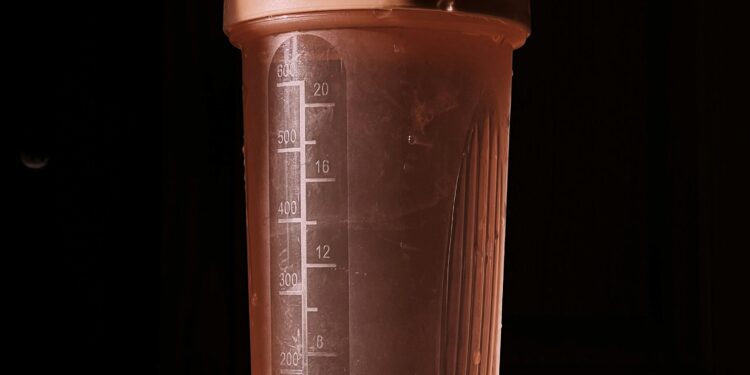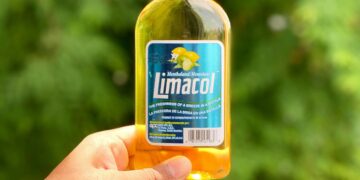Table of Contents
Introduction: Beyond the Breakfast Bowl – Cereal as a Therapeutic Tool
Functional constipation is a pervasive gastrointestinal complaint that affects a significant portion of the population, often diminishing quality of life through symptoms of infrequent, difficult, or incomplete bowel movements.
While numerous factors can contribute to this condition, medical and nutritional authorities consistently identify dietary modification as the primary, first-line therapeutic approach.1
Among the most effective and accessible dietary tools is the incorporation of high-fiber foods, with breakfast cereal representing a particularly potent and convenient vehicle for this intervention.
The mission of this report is to move beyond simplistic advice and provide a definitive, evidence-based guide to selecting and utilizing high-fiber cereal as a powerful tool for promoting and maintaining bowel regularity.
The consumer landscape is saturated with products making varied health claims, making it difficult to discern which cereals are genuinely effective for constipation relief versus those that are merely fortified with token amounts of fiber or laden with counterproductive levels of sugar.
This analysis will dissect the underlying science of dietary fiber, establish rigorous, data-driven criteria for evaluating products, and present a head-to-head clinical comparison of leading cereals.
To achieve this, the report will first explore the scientific mechanisms by which different types of fiber influence digestive health.
It will then use this understanding to build a framework for an optimal anti-constipation cereal.
Following this, a detailed analysis of specific, widely available cereals will be conducted, examining their nutritional profiles and ingredient lists against this gold standard.
The findings will be summarized in a comparative table for clarity.
Finally, and critically, this report will provide a practical implementation protocol, outlining the essential steps for safely introducing high-fiber foods to avoid common side effects and maximize their therapeutic benefit, with a particular focus on the non-negotiable role of hydration.
The Scientific Basis of Bowel Regularity: A Deep Dive into Dietary Fiber
A fundamental understanding of dietary fiber is essential to making an informed choice about which cereal is best suited for managing constipation.
Fiber is not a monolithic substance; its different forms have distinct physiological effects within the digestive tract.
Defining Dietary Fiber
Dietary fiber is broadly defined as the portion of plant-based food that cannot be digested or broken down by human digestive enzymes.1
It passes through the stomach and small intestine largely intact before reaching the large intestine, where it exerts its primary effects on bowel function.
The U.S. Food and Drug Administration (FDA) has established a regulatory definition that provides a crucial layer of distinction.
According to the FDA, dietary fiber that can be declared on a Nutrition Facts label includes two main categories:
- Intrinsic and Intact Fibers: These are naturally occurring fibers found within plants, such as vegetables, whole grains, fruits, and legumes. They are considered “intact” because they have not been removed from their natural food source.6 Foods containing these fibers, like whole-wheat flour or rolled oats, have well-established health benefits.
- Isolated or Synthetic Fibers: These are non-digestible carbohydrates that have been isolated from their plant source or synthesized in a lab. For these to be listed as “dietary fiber,” the FDA must determine that they have a beneficial physiological effect on human health.6 Examples include psyllium husk, cellulose, pectin, and inulin.6
This distinction is significant.
Intrinsic fibers from whole foods like whole grains come naturally packaged with a matrix of other essential nutrients, including vitamins, minerals, and phytonutrients.9
In contrast, isolated fibers are typically added to processed foods specifically to boost the fiber number on the label or to provide a specific functional property, such as thickening.
While beneficial, they lack the broader nutritional context of their whole-food counterparts.
Therefore, a cereal deriving its fiber from “whole wheat” is fundamentally different and often nutritionally superior to one made from “refined wheat flour” with “cellulose” added back in, even if the total fiber grams are identical.
The Two Pillars of Fiber: Soluble vs. Insoluble
Dietary fiber is further classified into two main types based on its interaction with water: soluble and insoluble.
Both are critical for overall health, but they play different and complementary roles in promoting bowel regularity.1
Most plant foods contain a mixture of both types.2
Insoluble Fiber: The “Bulking Agent” and “Transit Accelerator”
As its name suggests, insoluble fiber does not dissolve in water.4
It is often referred to as “roughage.” Its primary functions in the context of constipation are to add bulk to the stool and accelerate its passage through the digestive system.
- Mechanism of Action: When insoluble fiber reaches the colon, it absorbs some water but remains largely intact, significantly increasing the weight and size of the stool.2 This larger, bulkier stool is easier for the intestinal muscles to grip and propel forward through a process called peristalsis. The physical presence of this bulk stimulates the colon walls, prompting the muscle contractions that move waste along more quickly.1 This reduction in “transit time” means waste spends less time in the colon, which can prevent it from becoming hard and dry.
- Key Sources: Excellent sources of insoluble fiber include wheat bran, whole-grain products (like whole-wheat flour, brown rice, and quinoa), nuts, seeds, and the skins of many fruits and vegetables.1
- Clinical Evidence: The efficacy of insoluble fiber, particularly from wheat sources, is well-documented. A comprehensive review and meta-analysis demonstrated that for every additional gram of wheat fiber consumed per day, total stool weight increased by an average of 3.7 grams. This effect was predominantly linked to wheat bran fiber. The analysis concluded that wheat dietary fiber demonstrably improves key measures of bowel function, making it a cornerstone therapy for constipation.15
Soluble Fiber: The “Stool Softener” and “Gut Nourisher”
Soluble fiber, in contrast, dissolves in water to form a viscous, gel-like substance in the digestive tract.2
This property gives it a distinct and equally important role in digestive health.
- Mechanism of Action: As soluble fiber forms its gel, it traps a significant amount of water. This water is carried into the colon, where it helps to soften the stool, making it much more comfortable and easier to pass with less straining.2 This gel also slows down the digestive process in the stomach and small intestine, which has the added benefits of promoting feelings of fullness (satiety), stabilizing blood sugar levels by slowing sugar absorption, and helping to lower LDL (“bad”) cholesterol by binding with cholesterol and bile acids and removing them from the body.2
- Key Sources: Rich sources of soluble fiber include oats and oat bran, barley, psyllium, beans, lentils, peas, apples, citrus fruits, and carrots.1 Psyllium, in particular, is a highly effective soluble fiber and is the primary ingredient in many over-the-counter fiber supplements like Metamucil.16
The Fiber Synergy
For optimal management of constipation, a diet rich in both fiber types is ideal.
While insoluble fiber is the primary driver for increasing bulk and speeding up transit, soluble fiber is crucial for ensuring that the resulting stool is soft and easy to pass.
The two work in synergy: insoluble fiber provides the mass, and soluble fiber provides the moisture and lubrication.1
A stool that is bulky but hard can be just as difficult to pass as a small one.
The combination of both fiber types creates a stool that is both large and soft, the ideal consistency for promoting comfortable and regular bowel movements.
The Gold Standard: Establishing Criteria for the Optimal Anti-Constipation Cereal
Based on the scientific principles of fiber function, a set of clear, quantitative criteria can be established to identify the most effective breakfast cereals for managing constipation.
A truly therapeutic cereal must excel in four key areas: fiber quantity, fiber quality, sugar content, and protein content.
Criterion 1: Fiber Quantity – Meeting the “High Fiber” Benchmark
The total amount of fiber per serving is the most fundamental metric.
The FDA provides a clear legal definition for nutrient content claims that can be used as a benchmark.
A food can be labeled as a “high,” “rich in,” or “excellent source of” a nutrient if it contains 20% or more of the Daily Value (DV) for that nutrient per reference amount customarily consumed.9
The established Daily Value for dietary fiber is 28 grams per day for a standard 2,000-calorie diet.9
Therefore, to qualify as a “high fiber” food, a serving must provide at least 20% of this amount.
28 g (DV)×0.20=5.6 g
Conclusion: An optimal cereal for constipation must provide at least 5.6 grams of dietary fiber per serving.
Products that significantly exceed this threshold, providing 10 grams or more, offer a more potent therapeutic dose and will be given higher priority in this analysis.
Criterion 2: Fiber Quality – Prioritizing Insoluble and Whole-Grain Sources
Beyond the total quantity, the type and source of the fiber are paramount.
As established, insoluble fiber is the most effective type for increasing stool bulk and reducing transit time, which are the primary mechanisms for relieving constipation.15
Clinical evidence points specifically to wheat bran as a highly effective source of this insoluble fiber.15
Furthermore, the source of the fiber—whether it is “intrinsic and intact” from a whole grain or an “isolated” fiber added during processing—matters for overall nutritional quality.
Cereals that list a whole grain (e.g., “whole wheat,” “wheat bran,” “whole grain oats”) as the first or primary ingredient ensure that the fiber is delivered alongside the full spectrum of nutrients inherent to the grain.9
Conclusion: The ideal cereal will derive a significant portion of its fiber from insoluble sources, with a strong preference for those listing wheat bran or other whole grains as a primary ingredient.
Criterion 3: The Sugar Factor – Minimizing Added Sugars
Many commercially available cereals, even those marketed as healthy, contain high levels of added sugar.
High sugar intake is associated with a host of negative health outcomes, including inflammation, weight gain, and an increased risk of chronic diseases.
A cereal that is high in fiber but also high in sugar presents a nutritional conflict, where one benefit is potentially offset by a significant drawback.
Conclusion: An optimal anti-constipation cereal should contain minimal added sugar.
Cereals with 5 grams or less of added sugar per serving are strongly preferred.
Products that achieve a high fiber content with 0 grams of added sugar represent the top tier of nutritional quality and will be highlighted as such.10
Criterion 4: Protein Content – The Satiety Bonus
While not a direct factor in bowel mechanics, protein content is an important secondary criterion for a cereal’s overall quality.
Protein is more satiating than carbohydrates, meaning it helps you feel full and satisfied for a longer period after a meal.10
A breakfast cereal with a meaningful amount of protein can help prevent mid-morning hunger and support stable energy levels throughout the day.
Conclusion: A high-quality cereal should provide a beneficial amount of protein.
A target of 5 grams or more of protein per serving will be considered a significant bonus, enhancing the cereal’s role as a nutritious and satisfying start to the day.
A Head-to-Head Clinical Analysis of Leading High-Fiber Cereals
This section provides an in-depth, comparative analysis of seven leading high-fiber cereals.
Each product is evaluated against the four established criteria: fiber quantity, fiber quality, sugar content, and protein content.
The analysis goes beyond the numbers on the label to interpret the ingredient list and overall formulation from a clinical and nutritional perspective.
Kellogg’s All-Bran Original
- Nutritional Profile: Per 2/3 cup (41g) serving, Kellogg’s All-Bran Original provides 120 calories, 12g of dietary fiber, 5g of protein, and 9g of total sugars, of which 8g are added sugars.20 Crucially, the manufacturer’s detailed labeling specifies that the fiber consists of 3g soluble and 9g insoluble fiber.22
- Ingredient Analysis: The ingredient list is straightforward and targeted: the first ingredient is Wheat Bran, followed by sugar and malt flavor.22 This formulation directly aligns with the strong clinical evidence supporting wheat bran as a superior fiber source for improving bowel function.15 The product is also fortified with a range of B vitamins, iron, and vitamin D.22
- Clinical Perspective: Kellogg’s All-Bran Original can be considered a clinical workhorse in the management of constipation. Its fiber content is exceptionally high, providing 44% of the Daily Value in a single serving.22 The most compelling aspect of its profile is the high proportion of insoluble fiber (9g). This substantial dose is highly effective at increasing stool bulk and stimulating colonic transit. The presence of 3g of soluble fiber complements this action by helping to soften the stool, creating the ideal synergistic effect. The primary drawback of this product is its relatively high added sugar content of 8g per serving. However, for sheer efficacy in relieving constipation, it remains a benchmark product against which others are measured.19 The rare transparency in providing a breakdown of soluble versus insoluble fiber is exceptionally valuable for clinical assessment, as it confirms the product’s ideal composition for its intended purpose.
Nature’s Path Smart Bran
- Nutritional Profile: A 3/4 cup (40g) serving of Nature’s Path Smart Bran contains 110 calories, a remarkable 17g of dietary fiber, 4g of protein, and 8g of added sugars.25
- Ingredient Analysis: This cereal features a powerful and intelligently designed blend of fiber sources. The primary ingredients are Wheat Bran, Oat Bran, and Psyllium Seed Husk.20 This is a targeted combination of the most effective types of fiber for digestive health.
- Clinical Perspective: Nature’s Path Smart Bran is arguably one of the most therapeutically potent cereals on the market. Its formulation represents a sophisticated understanding of fiber science. It combines the potent bulking action of insoluble wheat bran, the cholesterol-lowering and stool-softening effects of soluble oat bran, and the powerful gel-forming capacity of psyllium husk, which is a highly effective soluble fiber known for its laxative properties.16 With 17g of fiber per serving, it delivers 61-62% of the daily fiber requirement, a truly immense dose.25 The inclusion of psyllium elevates this product beyond a simple food into a category that borders on a food-based fiber supplement. Psyllium is the active ingredient in bulk-forming laxatives like Metamucil and has been clinically proven in numerous studies to improve stool frequency and consistency in individuals with chronic constipation.17 This makes Smart Bran a top-tier therapeutic option. However, its potency necessitates extreme caution; it must be introduced into the diet very gradually to allow the digestive system to adapt. Like All-Bran, its main weakness is the 8g of added sugar.
Kashi GO Original
- Nutritional Profile: A large 1 1/4 cup (58g) serving of Kashi GO Original delivers 180 calories, 13g of dietary fiber (specified as 2g soluble and 11g insoluble), an impressive 11g of protein, and 8g of added sugars.29
- Ingredient Analysis: The ingredient list is complex, reflecting its multi-component texture. Key ingredients include soy protein concentrate, a “Kashi Seven Whole Grain Honey Puff” blend, wheat bran, and oat fiber.30 The fiber is derived from a mix of whole-grain and isolated sources.
- Clinical Perspective: Kashi GO Original is an excellent choice for individuals seeking a product that is high in both fiber and protein. The formidable 11g dose of insoluble fiber provides a powerful bulking effect, making it highly effective for promoting regularity.20 The high protein content (11g) makes it significantly more satiating than pure bran cereals, positioning it as a more complete meal in a bowl. The larger serving size may also be more psychologically satisfying for consumers accustomed to bigger bowls of cereal. This product successfully combines therapeutic efficacy for constipation with a more mainstream, palatable texture of puffs and twigs, making it a strong “all-in-one” option. It serves as an excellent gateway for individuals who need the high fiber dose of a bran cereal but prefer a more conventional breakfast experience. The 8g of added sugar remains a notable consideration.
Uncle Sam Original Wheat Berry Flakes
- Nutritional Profile: A 3/4 cup (60g) serving of Uncle Sam cereal contains 220 calories, 10g of dietary fiber, 8g of protein, and less than 1g of total sugar, with 0g of added sugar.33
- Ingredient Analysis: The ingredient list is a model of simplicity and quality: Whole Grain Wheat, Flaxseed, Barley Malt, and Salt.36 That’s it.
- Clinical Perspective: This cereal is an outstanding choice, particularly for the health purist or anyone prioritizing the minimization of added sugar. It delivers a very high 10g of fiber (36% DV) with virtually no sugar, a rare combination in the cereal aisle.35 The fiber is derived from high-quality, intrinsic sources: whole wheat berries provide insoluble fiber, while whole flaxseeds contribute a healthy mix of both soluble and insoluble fiber. The inclusion of flaxseed is a significant nutritional advantage, as it also provides heart-healthy ALA omega-3 fatty acids.20 The 8g of protein further enhances its nutritional profile, making it both filling and effective. Uncle Sam is the clear leader in the “high-fiber, zero-added-sugar” category. Its minimalist, four-ingredient formulation proves that high therapeutic efficacy for constipation is achievable without relying on added sweeteners, challenging the product design of many competitors.
Food for Life Ezekiel 4:9 Sprouted Whole Grain Cereal
- Nutritional Profile: A dense 1/2 cup (57g) serving of the original Ezekiel 4:9 cereal provides 190-200 calories, 6g of dietary fiber, 8g of protein, and only 1g of sugar, with most sources indicating 0g or 1g of added sugar.37
- Ingredient Analysis: This cereal’s formulation is unique. It is made from a blend of Organic Sprouted Wheat, Organic Sprouted Barley, Organic Sprouted Millet, Organic Sprouted Lentils, Organic Sprouted Soybeans, and Organic Sprouted Spelt.39 It contains absolutely no flour.38
- Clinical Perspective: Ezekiel 4:9 cereal comfortably meets the “high fiber” benchmark (6g is greater than the 5.6g threshold) and is another champion of the minimal-sugar category.10 Its key differentiator is the use of sprouted grains and legumes. The process of sprouting grains before they are processed can increase the bioavailability of certain nutrients and may make them easier to digest for some individuals.21 The combination of grains and legumes (lentils, soybeans) creates a complete protein, containing all nine essential amino acids from vegetable sources, a rarity in breakfast cereals.38 While its total fiber content is at the lower end of the high-fiber spectrum analyzed here, its overall nutritional profile is arguably superior due to the sprouting process, legume inclusion, and commitment to organic ingredients. It represents the best choice for a user who prioritizes overall food quality, nutrient density, and digestibility alongside effective fiber content.
Post Grape-Nuts (Original)
- Nutritional Profile: A 1/2 cup (58g) serving of Post Grape-Nuts contains 200 calories, 7g of dietary fiber, 6g of protein, and 5g of total sugars, with 0g of added sugar.41 The fiber is specified as 6g insoluble and 1g soluble.41
- Ingredient Analysis: The ingredient list is simple and effective: Whole Grain Wheat Flour, Malted Barley Flour, Salt, and Dried Yeast.41
- Clinical Perspective: Grape-Nuts is a classic high-fiber option for good reason. It delivers a solid 7g of fiber (27% DV), derived almost entirely from whole grain wheat, and meets the gold standard of having zero added sugar. The high proportion of insoluble fiber (6g) makes it very effective for adding stool bulk.41 The product is also heavily fortified with vitamins and minerals, providing 90% of the DV for iron in a single serving.41 A unique therapeutic aspect of Grape-Nuts is its physical form. The dense, hard kernels necessitate slow, thorough chewing, which can aid the digestive process and promote mindful eating. The small, dense serving size packs a significant nutritional punch, making it a very efficient way to consume fiber and protein without a large volume of food.
Nature’s Path Heritage Flakes
- Nutritional Profile: A 1 cup (40g) serving of Nature’s Path Heritage Flakes has 160 calories, 7g of dietary fiber, 5g of protein, and 5g of added sugars.43
- Ingredient Analysis: The strength of this cereal lies in its diverse grain blend. It is crafted with six ancient grains: Kamut Khorasan Wheat, Oats, Spelt, Barley, Millet, and Quinoa, and is further boosted with Wheat Bran.44
- Clinical Perspective: Nature’s Path Heritage Flakes is an excellent “all-around” choice and is frequently recommended by dietitians.10 It is well-suited for individuals who are not suffering from severe constipation but wish to improve or maintain regularity. It provides a very respectable 7g of fiber (25% DV) from a wide variety of high-quality, organic whole-grain sources. This grain diversity is beneficial for nourishing a healthy gut microbiome.21 It meets the criteria for high protein (5g) and acceptable added sugar (5g). Its hearty flake texture holds up well in milk, providing a satisfying crunch.45 While it lacks the extreme fiber content of a dedicated bran cereal, its balanced profile makes it a perfect starting point for someone new to high-fiber foods or an excellent, sustainable choice for long-term daily consumption.
At-a-Glance Comparison: A Data-Driven Summary
To consolidate the findings from the detailed analysis, the following table provides a direct, side-by-side comparison of the key nutritional metrics for each of the evaluated cereals.
This allows for a quick assessment of how each product performs against the established criteria for an optimal anti-constipation cereal.
| Cereal Name | Serving Size (g) | Total Fiber (g) | Insoluble Fiber (g) | Soluble Fiber (g) | Added Sugar (g) | Protein (g) | Primary Fiber Source(s) |
| Nature’s Path Smart Bran | 40g | 17g | N/A | N/A | 8g | 4g | Wheat Bran, Oat Bran, Psyllium |
| Kashi GO Original | 58g | 13g | 11g | 2g | 8g | 11g | Wheat Bran, Oat Fiber, Whole Grains |
| Kellogg’s All-Bran Original | 41g | 12g | 9g | 3g | 8g | 5g | Wheat Bran |
| Uncle Sam Original | 60g | 10g | N/A | N/A | 0g | 8g | Whole Grain Wheat, Flaxseed |
| Post Grape-Nuts | 58g | 7g | 6g | 1g | 0g | 6g | Whole Grain Wheat Flour |
| Nature’s Path Heritage Flakes | 40g | 7g | N/A | N/A | 5g | 5g | Ancient Grains, Wheat Bran |
| Ezekiel 4:9 Original | 57g | 6g | N/A | N/A | 0-1g | 8g | Sprouted Grains & Legumes |
The Implementation Protocol: A Practical Guide to Success
Selecting the right high-fiber cereal is only the first step.
Proper implementation is critical to achieving the desired benefits without experiencing uncomfortable side effects.
A sudden and dramatic increase in fiber intake can lead to a “fiber backlash,” and inadequate fluid intake can paradoxically worsen constipation.
The Principle of Gradual Introduction: How to Avoid a “Fiber Backlash”
A rapid increase in dietary fiber can overwhelm the natural bacteria in the digestive system.
The gut microbiome needs time to adapt to the new influx of fermentable material.
Introducing too much fiber too quickly can lead to unwanted gas, bloating, abdominal cramping, and even a temporary worsening of constipation.46
The key to avoiding this is a slow, methodical introduction.
A sensible, step-by-step plan is as follows:
- Week 1: Begin by consuming a small portion of your chosen high-fiber cereal, such as 1/4 cup or half of the recommended serving size. Eat this portion every other day to give your digestive system ample time to adjust between doses.
- Week 2: If the initial introduction is well-tolerated, increase the frequency to a half-serving every day. Continue to monitor your body’s response.
- Weeks 3-4: Gradually increase the portion size from a half-serving towards a full recommended serving. Research suggests that the body’s gut microflora will gradually adjust to the increased fiber load, with symptoms like excess gas typically returning to normal levels within three to four weeks.47
The Hydration Imperative: Water is Not Optional
This is the most critical component of a successful high-fiber regimen.
Fiber, particularly insoluble fiber, acts like a sponge in the digestive tract, absorbing large amounts of water to increase stool bulk.2
Soluble fiber requires water to form its beneficial, stool-softening gel.49
Without adequate fluid intake, the increased fiber can form a hard, dry, and dense mass that is very difficult to pass, thereby exacerbating the very problem you are trying to solve.2
The importance of hydration is supported by clinical evidence.
One randomized controlled trial involving patients with functional constipation found that while a high-fiber diet (25g/day) increased stool frequency, the effect was significantly enhanced when accompanied by an increased fluid intake of 1.5 to 2.0 liters per day.50
Water is essential for breaking down food, allowing the body to absorb nutrients, and softening stool to prevent constipation.51
Actionable Goal: It is imperative to consume at least 6 to 8 glasses (approximately 1.5 to 2.0 liters) of water or other non-caffeinated, unsweetened fluids throughout the day.
This is especially important on days when high-fiber cereal is consumed.1
Building a Pro-Regularity Lifestyle
While a high-fiber cereal can be a cornerstone of constipation management, it is most effective as part of a broader healthy lifestyle.
- Beyond the Cereal Bowl: High-fiber cereals can be used in other ways to boost fiber intake throughout the day. Consider sprinkling them on top of yogurt, cottage cheese, or fruit salads for added crunch and fiber. They can also be mixed into homemade trail mixes or used as a base for healthier baked goods.2
- Dietary Synergy: Support the cereal’s effect by incorporating a wide variety of other fiber-rich foods into your diet. Legumes (beans, peas, lentils), fruits (especially with skins), vegetables, and other whole grains all contribute to your daily fiber goal and promote a diverse gut microbiome.2
- The Role of Exercise: Regular physical activity is a key component of managing constipation. Exercise helps stimulate the natural muscle contractions of the intestines (peristalsis), which helps move stool through the colon more efficiently.55 Even moderate activity, like a daily walk, can have a significant positive impact.
Conclusion and Tiered Recommendations
The effective use of breakfast cereal as a therapeutic tool for functional constipation requires a strategic approach grounded in nutritional science.
The evidence clearly indicates that the ideal cereal is one that delivers a high quantity of fiber (at least 5.6g per serving), with a significant proportion of that fiber being insoluble and derived from whole-grain sources, particularly wheat bran.
Furthermore, an optimal choice will have minimal added sugar (5g or less) and a beneficial amount of protein (5g or more).
Critically, the success of any high-fiber cereal regimen is contingent upon a gradual introduction to allow for gut adaptation and a steadfast commitment to adequate hydration to ensure the fiber can function correctly.
Based on the comprehensive analysis, the following tiered recommendations can be made to guide selection based on individual needs and priorities:
Tier 1: Maximum Therapeutic Efficacy
These cereals offer the most potent doses of fiber and are specifically formulated for maximum impact on bowel regularity.
They are best suited for individuals with persistent constipation who need a powerful intervention.
- Nature’s Path Smart Bran: The top recommendation for sheer potency. Its unparalleled 17g of fiber per serving and synergistic blend of wheat bran, oat bran, and psyllium make it a formidable therapeutic tool.
- Kellogg’s All-Bran Original: A classic and clinically supported option. Its high dose of 12g of fiber, with a confirmed 9g of insoluble wheat bran fiber, makes it exceptionally effective at increasing stool bulk and frequency.
Tier 2: Best in Class (Zero Added Sugar)
These cereals provide excellent fiber content without any added sugars, making them ideal for health-conscious individuals, those with diabetes, or anyone seeking to minimize sugar intake.
- Uncle Sam Original Wheat Berry Flakes: The premier choice in this category. It combines an impressive 10g of fiber and 8g of protein with zero added sugar and the nutritional benefits of whole flaxseeds.
- Post Grape-Nuts: A time-tested, nutrient-dense option providing a solid 7g of fiber (6g insoluble) with zero added sugar in a compact serving.
Tier 3: Best All-Around & Easiest to Digest
These cereals offer a great balance of effective fiber, high-quality ingredients, and palatability.
They are excellent starting points for those new to high-fiber diets or for long-term maintenance of regularity.
- Nature’s Path Heritage Flakes: The best “all-around” option. It provides a good 7g of fiber from a diverse blend of organic ancient grains, with a moderate and acceptable 5g of added sugar. Its balance makes it a highly sustainable daily choice.
- Food for Life Ezekiel 4:9: The best choice for those prioritizing organic, sprouted ingredients and enhanced digestibility. It delivers an effective 6g of fiber and 8g of complete protein with virtually no added sugar.
By understanding the science of fiber and their own health priorities, individuals can confidently select the right product from this list.
By following the implementation protocol of gradual introduction and diligent hydration, high-fiber cereal can be transformed from a simple breakfast food into a safe, reliable, and powerful strategy for managing constipation and improving overall digestive health.
For any persistent, severe, or concerning symptoms, consultation with a physician or registered dietitian is always recommended.
Works cited
- Constipation | Patient Education – UCSF Health, accessed on August 8, 2025, https://www.ucsfhealth.org/education/constipation
- Dietary fiber: Essential for a healthy diet – Mayo Clinic, accessed on August 8, 2025, https://www.mayoclinic.org/healthy-lifestyle/nutrition-and-healthy-eating/in-depth/fiber/art-20043983
- High Fiber Cereal: How To Choose The Right Food To Eat For Breakfast – BetterMe, accessed on August 8, 2025, https://betterme.world/articles/high-fiber-cereal/
- Soluble vs. insoluble fiber Information | Mount Sinai – New York, accessed on August 8, 2025, https://www.mountsinai.org/health-library/special-topic/soluble-vs-insoluble-fiber
- Soluble vs. Insoluble Fiber: What’s the Difference? – Healthline, accessed on August 8, 2025, https://www.healthline.com/health/soluble-vs-insoluble-fiber
- Questions and Answers on Dietary Fiber – FDA, accessed on August 8, 2025, https://www.fda.gov/food/nutrition-food-labeling-and-critical-foods/questions-and-answers-dietary-fiber
- Dietary Fiber – Navigating the FDA’s Definition – Eurofins USA, accessed on August 8, 2025, https://www.eurofinsus.com/food-testing/resources/dietary-fiber-navigating-the-fda-s-definition/
- www.fda.gov, accessed on August 8, 2025, https://www.fda.gov/food/nutrition-food-labeling-and-critical-foods/questions-and-answers-dietary-fiber#:~:text=Supplement%20Facts%20labels%3F-,Dietary%20fiber%20that%20can%20be%20declared%20on%20the%20Nutrition%20and,beneficial%20physiological%20effects%20to%20human
- Interactive Nutrition Facts Label – Dietary Fiber – accessdata.fda.gov, accessed on August 8, 2025, https://www.accessdata.fda.gov/scripts/InteractiveNutritionFactsLabel/assets/InteractiveNFL_DietaryFiber_October2021.pdf
- The 9 Best High-Fiber Cereals That Can Help Keep You Regular, According to a Dietitian, accessed on August 8, 2025, https://www.health.com/nutrition/high-fiber-cereal
- Soluble vs. insoluble fiber: MedlinePlus Medical Encyclopedia, accessed on August 8, 2025, https://medlineplus.gov/ency/article/002136.htm
- Foods for Constipation | Johns Hopkins Medicine, accessed on August 8, 2025, https://www.hopkinsmedicine.org/health/wellness-and-prevention/foods-for-constipation
- The Benefits of a High Fiber Diet – Granite State Gastroenterology, accessed on August 8, 2025, https://granitegastro.com/the-benefits-of-a-high-fiber-diet/
- High Fiber Diet – Albany Gastroenterology Consultants, accessed on August 8, 2025, https://albanygi.com/information/high-fiber-diet-2/
- Effects of cereal fiber on bowel function: A systematic review of intervention trials – PMC, accessed on August 8, 2025, https://pmc.ncbi.nlm.nih.gov/articles/PMC4528039/
- High Fiber Diet Detailed | Ridgeline Endoscopy Center, accessed on August 8, 2025, https://ridgelinesurgical.com/patient-center/detailed-high-fiber-diet.dot
- Fiber supplements: Safe to take every day? – Mayo Clinic, accessed on August 8, 2025, https://www.mayoclinic.org/healthy-lifestyle/nutrition-and-healthy-eating/expert-answers/fiber-supplements/faq-20058513
- 21 CFR 101.54 — Nutrient content claims for “good source,” “high,” “more,” and “high potency.” – eCFR, accessed on August 8, 2025, https://www.ecfr.gov/current/title-21/chapter-I/subchapter-B/part-101/subpart-D/section-101.54
- 9 High-Fiber Cereals Approved By An RD – Nourish, accessed on August 8, 2025, https://www.usenourish.com/blog/high-fiber-cereal
- 17 Best High Fiber Cereal (Dietitian-Approved!), accessed on August 8, 2025, https://kelseyandcooperskitchen.com/high-fiber-cereal/
- 7 Cereals to Eat for Better Gut Health, According to Dietitians – EatingWell, accessed on August 8, 2025, https://www.eatingwell.com/cereals-to-eat-for-better-gut-health-11749185
- Kellogg’s® All-Bran® Original Cereal – SmartLabel™, accessed on August 8, 2025, https://smartlabel.kelloggs.com/Product/Index/00038000198410
- Kellogg’s All Bran Original Cereal | Hy-Vee Aisles Online Grocery Shopping, accessed on August 8, 2025, https://www.hy-vee.com/aisles-online/p/2813609/Kelloggs-All-Bran-Original-Cereal
- Best 25 High Fiber Cereal, According to a Dietitian – Graciously Nourished, accessed on August 8, 2025, https://graciouslynourished.com/cereal-that-is-high-in-fiber/
- Nutrition Facts for Nature’s Path Smart Bran Cereal • MyFoodDiary®, accessed on August 8, 2025, https://www.myfooddiary.com/foods/4241819/natures-path-smart-bran-cereal
- Nature’s Path Organic SmartBran with Wheat Psyllium and OatBran — 10.6 oz – Vitacost, accessed on August 8, 2025, https://www.vitacost.com/natures-path-organic-smartbran-with-wheat-psyllium-and-oatbran
- Nature’s Path Organic Smart Bran with Psyllium & Oatbran Cereal – H-E-B, accessed on August 8, 2025, https://www.heb.com/product-detail/nature-s-path-organic-smart-bran-with-psyllium-oatbran-cereal/1093849
- The Effect of Fiber Supplementation on Chronic Constipation in Adults: An Updated Systematic Review and Meta-Analysis of Randomized Controlled Trials – PubMed Central, accessed on August 8, 2025, https://pmc.ncbi.nlm.nih.gov/articles/PMC9535527/
- Nutrition Facts for Kashi Go Original Cereal • MyFoodDiary®, accessed on August 8, 2025, https://www.myfooddiary.com/foods/537552/kashi-go-original-cereal
- Kashi GO® Protein & Fiber Cereal Original – SmartLabel™, accessed on August 8, 2025, https://smartlabel.kelloggs.com/Product/Index/00018627703211
- Kashi GO Original Protein Cereal, 13.1 oz – Kroger, accessed on August 8, 2025, https://www.kroger.com/p/kashi-go-original-protein-cereal/0001862770321
- Kashi GO Original Breakfast Cereal – Shop Cereal at H-E-B, accessed on August 8, 2025, https://www.heb.com/product-detail/kashi-go-original-breakfast-cereal/77302
- www.raleys.com, accessed on August 8, 2025, https://www.raleys.com/product/80446609/uncle-sam-cereal-original-wheat-berry-flakes#:~:text=Per%203%2F4%20Cup%20Serving,g%20or%20more%20per%20serving.
- Uncle Sam Cereal, Original Wheat Berry Flakes – Raley’s, accessed on August 8, 2025, https://www.raleys.com/product/80446609/uncle-sam-cereal-original-wheat-berry-flakes
- Nutrition Facts for Uncle Sam Original Wheat Berry Flakes – MyFoodDiary, accessed on August 8, 2025, https://www.myfooddiary.com/foods/2974922/uncle-sam-original-wheat-berry-flakes
- Uncle Sam® Original Wheat Berry Flakes, 13 oz – QFC, accessed on August 8, 2025, https://www.qfc.com/p/uncle-sam-original-wheat-berry-flakes/0004165345700
- Food For Life Ezekiel 4:9 Whole Grain Cereal Nutrition Facts – Eat This Much, accessed on August 8, 2025, https://www.eatthismuch.com/calories/ezekiel-49-whole-grain-cereal-527477
- Food For Life Ezekiel 4:9 Cereal Sprouted Grain Crunchy Almond – 16 Oz – Vons, accessed on August 8, 2025, https://www.vons.com/shop/product-details.960028007.html
- Ezekiel 4:9 Almond Sprouted Whole Grain Cereal | Food For Life, accessed on August 8, 2025, https://www.foodforlife.com/product/cereals/ezekiel-49-almond-sprouted-whole-grain-cereal
- The 15 best high-fiber, low-sugar cereals according to a registered dietitian – Samantha Cassetty, accessed on August 8, 2025, https://samanthacassetty.com/high-fiber-low-sugar-cereals/
- Post Grape-Nuts Cereal – Shop Cereal at H-E-B, accessed on August 8, 2025, https://www.heb.com/product-detail/post-grape-nuts-cereal/135783
- Post Grape-nuts Cereal Nutrition Facts – Eat This Much, accessed on August 8, 2025, https://www.eatthismuch.com/calories/grape-nuts-cereal-4063475
- Nutrition Facts for Nature’s Path Heritage Flakes Cereal – MyFoodDiary, accessed on August 8, 2025, https://www.myfooddiary.com/foods/7545224/natures-path-heritage-flakes-cereal
- Nature’s Path Organic Heritage Flakes Cereal – Shop Cereal at H-E-B, accessed on August 8, 2025, https://www.heb.com/product-detail/nature-s-path-organic-heritage-flakes-cereal/152468
- Nature’s Path Heritage Flakes Breakfast Cereal – 13.25oz – Target, accessed on August 8, 2025, https://www.target.com/p/nature-s-path-heritage-flakes-breakfast-cereal-13-25oz/-/A-16681621
- www.mayoclinic.org, accessed on August 8, 2025, https://www.mayoclinic.org/healthy-lifestyle/nutrition-and-healthy-eating/in-depth/fiber/art-20043983#:~:text=High%2Dfiber%20foods%20are%20good,system%20adjust%20to%20the%20change.
- Increasing fiber in your diet may increase gas | UCLA Health, accessed on August 8, 2025, https://www.uclahealth.org/news/article/increasing-fiber-in-your-diet-may-increase-gas
- Effects of High-Fiber Diets and Macronutrient Substitution on Bloating: Findings From the OmniHeart Trial, accessed on August 8, 2025, https://pmc.ncbi.nlm.nih.gov/articles/PMC7056053/
- Increasing Fiber Intake | Patient Education – UCSF Health, accessed on August 8, 2025, https://www.ucsfhealth.org/education/increasing-fiber-intake
- Water supplementation enhances the effect of high-fiber diet on stool frequency and laxative consumption in adult patients with functional constipation – PubMed, accessed on August 8, 2025, https://pubmed.ncbi.nlm.nih.gov/9684123/
- Understanding the Importance of Fiber and Water Intake for Healthy Digestion – thegoodbug, accessed on August 8, 2025, https://thegoodbug.com/blogs/news/fiber-and-hydration-for-digestion
- Water after meals: Does it disturb digestion? – Mayo Clinic, accessed on August 8, 2025, https://www.mayoclinic.org/healthy-lifestyle/nutrition-and-healthy-eating/expert-answers/digestion/faq-20058348
- 10 Reasons Why Hydration is Important – National Council on Aging, accessed on August 8, 2025, https://www.ncoa.org/article/10-reasons-why-hydration-is-important/
- 16 Easy Ways to Eat More Fiber – Healthline, accessed on August 8, 2025, https://www.healthline.com/nutrition/16-ways-to-eat-more-fiber
- Bloated Stomach: Causes, Tips to Reduce & When to be Concerned – Cleveland Clinic, accessed on August 8, 2025, https://my.clevelandclinic.org/health/symptoms/21740-bloated-stomach






